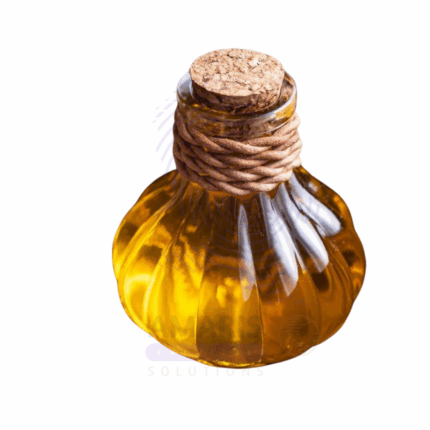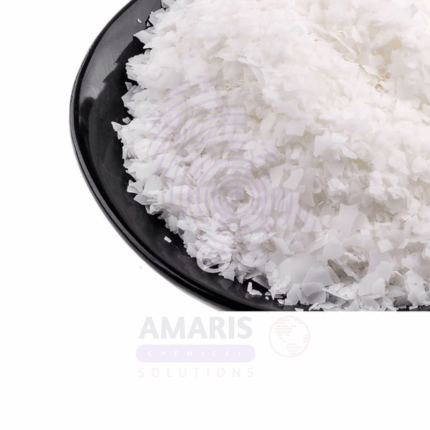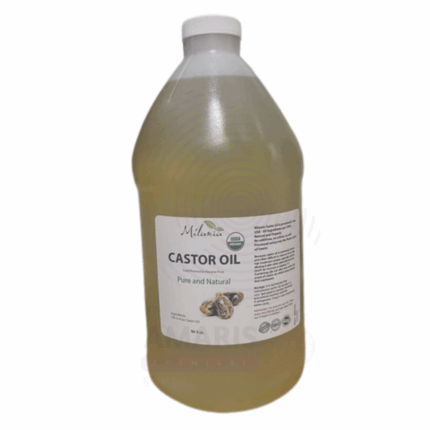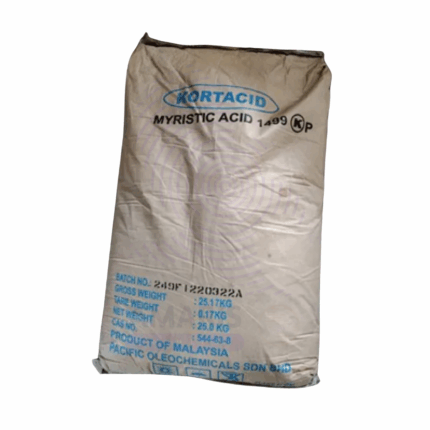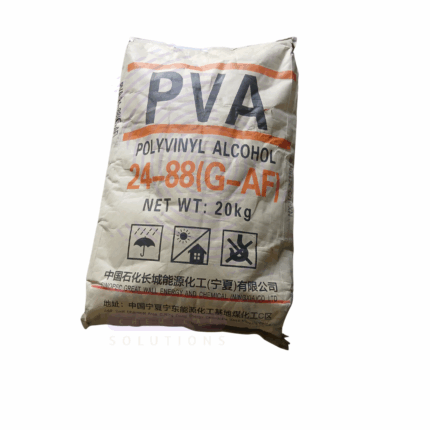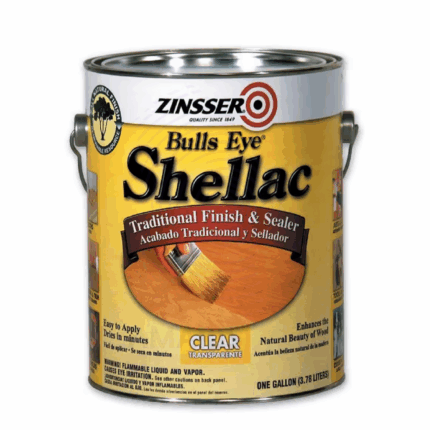“Blue Berry Fragrance Oil” has been added to your cart. View cart
Pearlizer (UFABLEND)
Whatsapp Order
Product Description
Pearlizer (UFABLEND) is a specialized additive designed to impart a lustrous, pearlescent finish to a variety of coatings, paints, cosmetics, and plastics. It enhances the aesthetic appeal by creating shimmering and iridescent effects through the controlled dispersion of mica, titanium dioxide, or other pearlescent pigments. Pearlizer (UFABLEND) offers excellent compatibility with different formulations, providing stability and improved visual effects.
Description
Table of Contents
Toggle
Uses
Primary Uses
- Coatings and Paints
- Used in automotive, industrial, and decorative coatings to provide a pearlescent, glossy finish.
- Enhances exterior durability and visual appeal of architectural paints.
- Cosmetics
- Incorporated into makeup products such as eyeshadows, lipsticks, and nail polishes for shimmer and shine.
- Used in skincare formulations to add a radiant glow or illuminating effect.
- Plastics and Polymers
- Added to plastic compounds and masterbatches to produce pearlescent effects in molded or extruded products.
- Used in packaging materials for premium visual appeal.
- Printing Inks
- Utilized in specialty printing inks for luxury packaging and labels to create iridescent finishes.
Secondary Uses
- Textiles
- Applied as a finishing agent in textile coatings to impart a pearlescent sheen.
- Crafts and Art Supplies
- Used in craft paints and resins for decorative and artistic effects.
- Household Products
- Included in waxes, polishes, and detergents to improve gloss and sheen on surfaces.
- Food Industry (Limited Use)
In very low concentrations and approved grades, used as a decorative effect in confectionery and edible coatings (subject to regulatory approval).
KEY PRODUCT FEATURES
Key Attributes
Basic Identification Attributes
- Chemical Name (IUPAC): Pearlescent pigment dispersion (varies by formulation)
- Common/Trade Name: Pearlizer (UFABLEND)
- CAS Number: Proprietary mixture
- HS Code: 3206.49.00 (Other pigments)
- Synonyms: Pearlescent additive; pearlescent pigment dispersion
Physical & Chemical Properties
- Physical State: Liquid or paste dispersion
- Color & Odor: Milky white to translucent; mild or no odor
- pH: Typically 6.0 – 8.0
- Solubility: Dispersible in water or solvents depending on formulation
- Density: Approx. 1.0 – 1.2 g/cm³
Safety & Hazard Attributes
- GHS Classification: Generally non-hazardous
- Toxicity: Low toxicity; avoid inhalation of powder forms
- Exposure Limits: Standard industrial hygiene practices recommended
Storage & Handling Attributes
- Storage Conditions: Store in a cool, dry place away from direct sunlight and freezing temperatures
- Container Type: Supplied in drums, pails, or plastic containers with airtight seals
- Shelf Life: Typically 12 months if stored properly
- Handling Precautions: Avoid skin contact and inhalation of aerosols or powders
Regulatory & Compliance Attributes
- Complies with relevant pigment and cosmetic additive standards
- Approved for use in coatings, plastics, and cosmetics by international regulatory bodies
- Meets REACH and other chemical safety regulations
Environmental & Health Impact
- Biodegradability: Not readily biodegradable due to mineral pigment content
- Ecotoxicity: Low environmental risk under normal use and disposal conditions
- Bioaccumulation: Not expected
- Safety: Minimal risk if handled according to guidelines
SAFETY HANDLING PRECAUTIONS
Safety Handling Precautions
- PPE Required: Gloves, safety goggles, and dust mask when handling powders or concentrates
- Handling Guidelines: Use in well-ventilated areas; avoid inhalation of airborne particles
- Storage Measures: Keep containers tightly closed and stored away from incompatible materials
First Aid Measures
- Skin Contact: Wash thoroughly with soap and water
- Eye Contact: Rinse with plenty of water for at least 15 minutes; seek medical attention if irritation persists
- Inhalation: Move to fresh air if irritation occurs; seek medical help if symptoms persist
- Ingestion: Rinse mouth; seek medical advice if symptoms develop
Firefighting Measures
- Fire Hazards: Non-flammable
- Extinguishing Media: Use water spray, foam, or dry chemical extinguishers for surrounding fires
- Special Precautions: Use standard protective equipment
- Hazardous Combustion Products: May produce fumes if organic solvents are present
Related products
Almond Wax
Almond Wax is a natural, plant-based wax derived from the hydrogenation of almond oil (Prunus amygdalus dulcis). It is a creamy to white, semi-solid wax with a mild, nutty scent and excellent emollient properties. Almond Wax is rich in fatty acids and has a smooth, soft texture, making it ideal for use in cosmetic, personal care, and candle formulations.
Due to its gentle consistency, skin-friendly profile, and moisturizing capabilities, Almond Wax is widely used in body butters, balms, lip care products, massage bars, and artisan soaps. It functions as a natural alternative to petroleum-based waxes and provides structure, viscosity, and glide to formulations. It also finds application in soft wax blends for natural candle products.
Blackcurrant and vanilla fragrance water soluble
Blackcurrant and Vanilla Fragrance Water Soluble is a sophisticated aromatic blend that combines the tart, fruity notes of ripe blackcurrant with the creamy sweetness of vanilla. Designed specifically for water-based formulations, this fragrance ensures excellent solubility and stability without separation or cloudiness. It offers a well-balanced, long-lasting scent ideal for personal care products, household cleaners, and specialty formulations. Its dual character of freshness and warmth adds sensory richness to products while maintaining clarity and performance.
Castor Oil Food Grade
Castor Oil Food Grade is a pale yellow, viscous vegetable oil derived by cold pressing the seeds of the Ricinus communis plant. Known for its high content of ricinoleic acid, it has a mild flavor and is widely used in the food, pharmaceutical, and nutraceutical industries. As a food-grade oil, it is purified to meet strict quality and safety standards. It serves both as a laxative agent and a food additive, often used in flavor carriers, coatings, and processing aids. The oil’s high stability and low moisture content also make it suitable for specialty industrial applications in food-safe environments.
Mono Ethanol Amine
Mono Ethanol Amine (MEA) is a clear, colorless, hygroscopic liquid with an ammonia-like odor. It is an organic chemical compound combining both amine and alcohol functional groups. MEA is widely used as a versatile chemical intermediate and is especially important in gas treatment, detergents, and chemical manufacturing due to its alkalinity and solubility in water and organic solvents.
MonoPropylene Glycol ( MPG)
Mono Propylene Glycol (MPG) is a clear, colorless, odorless, and slightly viscous liquid commonly used as a solvent, humectant, and antifreeze agent. It exhibits excellent moisture retention, low volatility, and high boiling point, making it suitable for a wide range of industrial, food, pharmaceutical, and cosmetic applications. MPG is valued for its low toxicity and biodegradability.
Myristic Acid
Myristic Acid is a saturated fatty acid with a 14-carbon chain, naturally found in nutmeg, coconut oil, palm kernel oil, and butter fat. It appears as a white crystalline solid with a faint odor. It is widely used in the manufacture of soaps, cosmetics, surfactants, and food additives due to its emollient and cleansing properties. Myristic Acid acts as a key intermediate in the production of esters, detergents, and lubricants.
Polyvinyl Alcohol
Polyvinyl Alcohol is a synthetic, water-soluble polymer made by the hydrolysis of polyvinyl acetate. It is known for excellent film-forming, emulsifying, and adhesive properties. PVA is widely used across industries for applications requiring biodegradable, non-toxic, and flexible materials. It offers good chemical resistance, mechanical strength, and compatibility with other polymers and additives.
Shellac
Shellac is a natural resin secreted by the lac insect, primarily found in South Asia. It is processed into flakes or powder form and dissolved in alcohol to create a versatile film-forming agent. Shellac provides excellent adhesion, gloss, and moisture resistance, making it widely used as a wood finish, food glaze, and pharmaceutical coating. It is valued for its natural origin, biodegradability, and safe use in food and cosmetic applications.


 Preservatives(food)
Preservatives(food) Flavor Enhancers
Flavor Enhancers Acidulants
Acidulants Sweeteners
Sweeteners Antioxidants
Antioxidants Colorants(food)
Colorants(food) Nutraceutical Ingredients (food)
Nutraceutical Ingredients (food) Nutrient Supplements
Nutrient Supplements Emulsifiers
Emulsifiers
 Collectors
Collectors Dust Suppressants
Dust Suppressants Explosives and Blasting Agents
Explosives and Blasting Agents Flocculants and Coagulants
Flocculants and Coagulants Frothers
Frothers Leaching Agents
Leaching Agents pH Modifiers
pH Modifiers Precious Metal Extraction Agents
Precious Metal Extraction Agents
 Antioxidants(plastic)
Antioxidants(plastic) Colorants (Pigments, Dyes)
Colorants (Pigments, Dyes) Fillers and Reinforcements
Fillers and Reinforcements Flame Retardants
Flame Retardants Monomers
Monomers Plasticizers
Plasticizers Polymerization Initiators
Polymerization Initiators Stabilizers (UV, Heat)
Stabilizers (UV, Heat)
 Antifoaming Agents
Antifoaming Agents Chelating Agents
Chelating Agents Coagulants and Flocculants
Coagulants and Flocculants Corrosion Inhibitors
Corrosion Inhibitors Disinfectants and Biocides
Disinfectants and Biocides Oxidizing Agents
Oxidizing Agents pH Adjusters
pH Adjusters Scale Inhibitors( water)
Scale Inhibitors( water)
 Antioxidants(cosmetic)
Antioxidants(cosmetic) Emollients
Emollients Fragrances and Essential Oils
Fragrances and Essential Oils Humectants
Humectants Preservatives
Preservatives Surfactants(cosmetic)
Surfactants(cosmetic) Thickeners
Thickeners UV Filters
UV Filters
 Fertilizers
Fertilizers Soil Conditioners
Soil Conditioners Plant Growth Regulators
Plant Growth Regulators Animal Feed Additives
Animal Feed Additives Biostimulants
Biostimulants Pesticides (Herbicides, Insecticides, Fungicides)
Pesticides (Herbicides, Insecticides, Fungicides)
 Active Pharmaceutical Ingredients (APIs)
Active Pharmaceutical Ingredients (APIs) Excipients
Excipients Solvents(pharmaceutical)
Solvents(pharmaceutical) Antibiotics
Antibiotics Antiseptics and Disinfectants
Antiseptics and Disinfectants Vaccine Adjuvants
Vaccine Adjuvants Nutraceutical Ingredients (pharmaceutical)
Nutraceutical Ingredients (pharmaceutical) Analgesics & Antipyretics
Analgesics & Antipyretics
 Analytical Reagents
Analytical Reagents Solvents(lab)
Solvents(lab) Chromatography Chemicals
Chromatography Chemicals Spectroscopy Reagents
Spectroscopy Reagents microbiology-and-cell-culture-reagents
microbiology-and-cell-culture-reagents Molecular Biology Reagents
Molecular Biology Reagents Biochemical Reagents
Biochemical Reagents Inorganic and Organic Standards
Inorganic and Organic Standards Laboratory Safety Chemicals
Laboratory Safety Chemicals Specialty Laboratory Chemicals(Special Laboratory Equipment)
Specialty Laboratory Chemicals(Special Laboratory Equipment)
 Demulsifiers
Demulsifiers Hydraulic Fracturing Fluids
Hydraulic Fracturing Fluids Scale Inhibitors(oil)
Scale Inhibitors(oil) Surfactants(oil)
Surfactants(oil) Drilling Fluids
Drilling Fluids
 Dyes and Pigments
Dyes and Pigments Bleaching Agents
Bleaching Agents Softening Agents
Softening Agents Finishing Agents
Finishing Agents Antistatic Agents
Antistatic Agents
 Admixtures
Admixtures Waterproofing Agents
Waterproofing Agents Sealants and Adhesives
Sealants and Adhesives Curing Compounds
Curing Compounds Concrete Repair Chemicals
Concrete Repair Chemicals Anti-Corrosion Coatings
Anti-Corrosion Coatings
 Surfactants(cleaning)
Surfactants(cleaning) Builders
Builders Enzymes
Enzymes Solvents (Cleaning)
Solvents (Cleaning) Fragrances
Fragrances
 Electronic Chemicals
Electronic Chemicals Catalysts
Catalysts Lubricants
Lubricants Photographic Chemicals
Photographic Chemicals Refrigerants
Refrigerants Automotive chemicals
Automotive chemicals Pyrotechnic Chemicals
Pyrotechnic Chemicals
 Biodegradable Surfactants
Biodegradable Surfactants Bio-based Solvents
Bio-based Solvents Renewable Polymers
Renewable Polymers Carbon Capture Chemicals
Carbon Capture Chemicals Wastewater Treatment Chemicals
Wastewater Treatment Chemicals
 Pigments
Pigments Solvents(paint)
Solvents(paint) Specialty Coatings
Specialty Coatings Binders/Resins
Binders/Resins Additives
Additives Driers
Driers Anti-Corrosion Agents
Anti-Corrosion Agents Functional Coatings
Functional Coatings Application-Specific Coatings
Application-Specific Coatings
 Fresh Herbs
Fresh Herbs Ground Spices
Ground Spices Whole Spices
Whole Spices Spice Blends
Spice Blends Dried Herbs
Dried Herbs
 Leavening Agents
Leavening Agents Dough Conditioners
Dough Conditioners Flour Treatments
Flour Treatments Fat Replacers
Fat Replacers Decoratives
Decoratives Preservatives(baking)
Preservatives(baking)
 Plasticizers & Softeners
Plasticizers & Softeners Reinforcing Agents
Reinforcing Agents Adhesion Promoters
Adhesion Promoters Vulcanizing Agents
Vulcanizing Agents Antidegradants
Antidegradants Blowing Agents
Blowing Agents Fillers & Extenders
Fillers & Extenders Accelerators & Retarders
Accelerators & Retarders
